Related Research Articles

The New General Catalogue of Nebulae and Clusters of Stars is an astronomical catalogue of deep-sky objects compiled by John Louis Emil Dreyer in 1888. The NGC contains 7,840 objects, including galaxies, star clusters, emission nebulae and absorption nebulae. Dreyer published two supplements to the NGC in 1895 and 1908, known as the Index Catalogues, describing a further 5,386 astronomical objects. Thousands of these objects are best known by their NGC or IC numbers, which remain in widespread use.
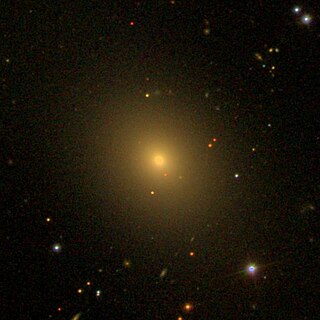
NGC 57 is an elliptical galaxy in the constellation Pisces. It was discovered on 8 October 1784 by astronomer William Herschel.
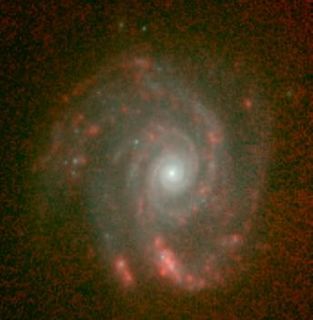
NGC 5653 is an unbarred spiral galaxy in the constellation Boötes. It was discovered on March 13, 1785 by John Herschel and subsequently placed in the New General Catalogue.
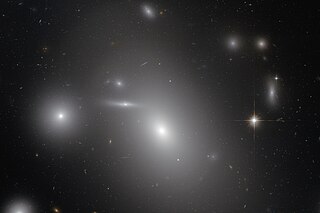
NGC 4889 is an E4 supergiant elliptical galaxy. It was discovered in 1785 by the British astronomer Frederick William Herschel I, who catalogued it as a bright, nebulous patch. The brightest galaxy within the northern Coma Cluster, it is located at a median distance of 94 million parsecs from Earth. At the core of the galaxy is a supermassive black hole that heats the intracluster medium through the action of friction from infalling gases and dust. The gamma ray bursts from the galaxy extend out to several million light years of the cluster.

NGC 60 is an Sc type spiral galaxy in the Pisces constellation. NGC 60 is noticed for its unusually distorted spiral arms, which are commonly due to gravitational effects of neighboring galaxies, but there are no galaxies around NGC 60 to allow this.

NGC 1723 is a barred spiral galaxy in the constellation Eridanus. The galaxy is listed in the New General Catalogue. It was discovered on September 13, 1863 by the astronomer Albert Marth.

NGC 1725 is a lenticular galaxy in the constellation Eridanus. The galaxy is listed in the New General Catalogue. It was discovered on November 10, 1885 by the astronomer Edward Emerson Barnard.
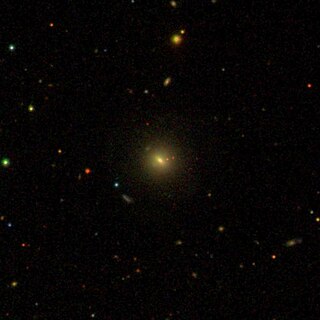
NGC 462 is an elliptical galaxy located in the Pisces constellation. It was discovered by Albert Marth on 23 October 1864. Dreyer, creator of the New General Catalogue, originally described it as "extremely faint, very small, stellar". The word stellar clearly suggests an initial misidentification of NGC 462 as a star.

NGC 156 is a double star located in the Cetus constellation. It was discovered on 1882 by Ernst Wilhelm Leberecht Tempel.

NGC 169 is a barred spiral galaxy located in the constellation Andromeda. It was discovered on September 18, 1857 by R. J. Mitchell.
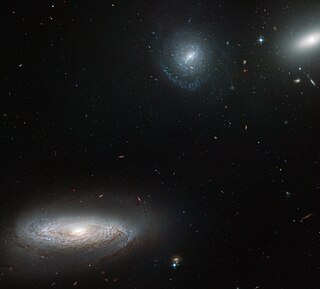
NGC 197 is a lenticular galaxy located in the constellation Cetus. It was discovered on October 16, 1863 by Albert Marth.

NGC 243 is a lenticular galaxy located in the constellation Andromeda. It was discovered on October 18, 1881 by Édouard Stephan.

NGC 359 is an elliptical galaxy located approximately 238 million light-years from the Solar System in the constellation Cetus. It was discovered on September 2, 1864, by Albert Marth. It was described by Dreyer as "extremely faint, very small."

NGC 425 is a spiral galaxy in the constellation of Andromeda. It was discovered on 29 October 1866 by Truman Safford.
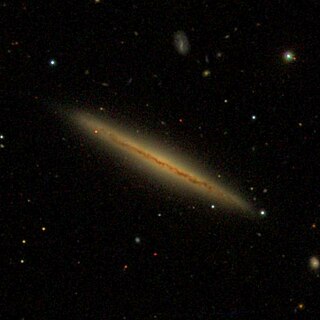
NGC 5470 is an edge-on spiral galaxy located between 43 and 68 million light-years away in the constellation Virgo. It was discovered by astronomer John Herschel in 1830.
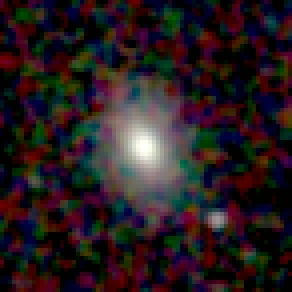
NGC 7033 is a lenticular galaxy located about 390 million light-years away in the constellation of Pegasus. It is part of a pair of galaxies that contains the nearby galaxy NGC 7034. NGC 7033 was discovered by astronomer Albert Marth on September 17, 1863.

NGC 4876 is an elliptical galaxy located about 325 million light-years away in the constellation Coma Berenices. NGC 4876 was discovered by astronomer Guillaume Bigourdan on May 16, 1885. NGC 4876 is a member of the Coma Cluster.

NGC 4886 is an elliptical galaxy located about 327 million light-years away in the constellation Coma Berenices. NGC 4886 was discovered by astronomer Heinrich d'Arrest on April 6, 1864. It was then rediscovered by d'Arrest on April 22, 1865 and was listed as NGC 4882. NGC 4886 is a member of the Coma Cluster.

NGC 4883 is a barred lenticular galaxy located about 315 million light-years away in the constellation Coma Berenices. NGC 4883 was discovered by astronomer Heinrich d'Arrest on April 22, 1865. It is a member of the Coma Cluster.

NGC 5619 is an intermediate spiral galaxy in the constellation Virgo. The galaxy was found on April 10, 1828 by the British astronomer John Herschel. It is located about 390 million light-years away from the Sun.
References
- ↑ "The NGC / IC Project - Home of the Historically Corrected New General Catalogue (HCNGC) since 1993". 2016-04-18. Archived from the original on 2016-04-18. Retrieved 2020-07-25.